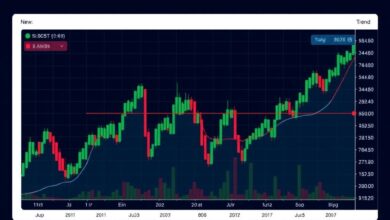Top 5 passive income streams for investors in 2025

Consider investing in platforms that facilitate automated trading. These platforms leverage algorithms to execute trades on your behalf, allowing you to benefit from market fluctuations without the need for constant monitoring. This method not only saves time but also maximizes potential returns by capitalizing on opportunities as they arise.
Royalties present another lucrative avenue. By creating or acquiring intellectual property–such as music, art, or patents–you can earn ongoing payments each time your work is used or sold. This form of revenue can provide a steady stream of cash flow with minimal effort once the initial creation is complete.
The crypto market offers unique possibilities for wealth generation through staking and yield farming. By participating in these processes, investors can earn rewards in the form of additional tokens while contributing to the network’s security and functionality. With proper research and risk management, this can lead to significant returns over time.
Dividends from established companies remain a reliable source of financial growth. Investing in dividend-paying stocks allows you to receive regular payouts while potentially benefiting from capital appreciation. Focusing on companies with a strong track record of increasing their dividends can enhance your portfolio’s performance considerably.
Lastly, consider real estate crowdfunding platforms, which allow you to invest in property projects with lower capital requirements. These platforms often provide returns through rental income and appreciation, democratizing access to real estate investment opportunities that were previously available only to wealthy individuals.
Real Estate Crowdfunding Platforms
Consider diversifying your portfolio with real estate crowdfunding platforms. These digital venues allow individuals to invest in properties without the need for substantial capital, making real estate accessible to a broader audience. Through these platforms, investors can earn dividends from rental income and potential appreciation, alongside royalties generated from property sales.
Platforms such as Fundrise and RealtyMogul offer opportunities to invest in commercial and residential properties. They typically feature detailed project descriptions, including expected returns and timelines. By analyzing these metrics, you can make informed decisions about where to allocate your resources.
Investing through these avenues often involves lower fees compared to traditional real estate investments. Additionally, many platforms provide automated reporting features that track your earnings over time, simplifying the management of your investments.
It’s crucial to review each platform’s investment options and fee structures before committing. Look for transparency in their operations and check user reviews for insights on their reliability. This approach ensures that you select platforms aligned with your financial goals while minimizing risks associated with market volatility.
In conclusion, embracing real estate crowdfunding can enhance your earning potential through diversified property investments while enjoying the benefits of a digital investment ecosystem.
Dividend Stocks Selection Strategies
Select companies with a proven track record of increasing dividends over time. Look for firms that have consistently raised their payouts for at least a decade, signaling financial stability and strong cash flow management.
Focus on dividend yield, but don’t overlook the importance of payout ratio. A sustainable payout ratio (typically below 60%) indicates that the company can maintain or grow its dividends even during economic downturns.
Evaluate the business model of potential investments. Companies in sectors like real estate or utilities often provide reliable returns due to their stable earnings. Additionally, consider those that generate revenue from royalties, as these can be less impacted by market volatility.
Diversify across various industries to mitigate risk. Investing in dividend stocks from different sectors, such as technology and consumer goods, can enhance overall portfolio resilience while still providing consistent dividends.
Examine the company’s debt levels. A low debt-to-equity ratio suggests that a firm is less likely to face financial distress, making it more capable of meeting dividend obligations. Companies with manageable debt are often better positioned to navigate economic shifts.
Lastly, keep an eye on emerging trends like crypto integration within traditional businesses. Some established firms are beginning to explore blockchain technology and digital currencies, which could lead to new revenue streams and potentially higher future dividends.
Creating Digital Products Online
Consider developing and selling digital products such as eBooks, online courses, or software applications. These offerings can generate revenue through various platforms without continuous effort after the initial creation.
Target niches in cryptocurrency or real estate to attract specific audiences. For instance, an eBook on investing in crypto can appeal to tech-savvy individuals, while a comprehensive course on real estate investment strategies may attract new investors looking for guidance.
Utilize platforms like Gumroad or Teachable to distribute your creations. These services handle payment processing and provide tools for marketing your products effectively. Leverage social media and content marketing to draw attention to your offerings.
Incorporating affiliate links within your digital products can enhance earnings. By promoting relevant crypto wallets or real estate platforms, you earn commissions on referrals while providing additional value to your audience.
Regularly update your products to maintain relevance. This not only improves customer satisfaction but also encourages repeat purchases and fosters loyalty. Consider offering bundled packages that combine multiple digital items for a higher perceived value.
Finally, track performance metrics using analytics tools. Understanding which products resonate most with buyers will help refine future offerings and optimize sales strategies over time.
Investing in Peer-to-Peer Lending
Consider allocating funds to peer-to-peer lending platforms, which facilitate direct loans between individuals. This method can yield attractive returns compared to traditional banking products.
- Research Reputable Platforms: Evaluate platforms like LendingClub and Prosper. Check their historical performance, user reviews, and default rates.
- Diversification: Spread investments across multiple loans to mitigate risk. Aim for at least 50 different loans to minimize exposure to defaults.
- Assess Risk Levels: Each loan comes with a risk grade. Invest primarily in medium to high-grade loans for better returns while balancing risk.
- Automate Investments: Use automated investing tools available on these platforms. Set your parameters and let the system allocate funds accordingly.
- Monitor Loan Performance: Regularly review your portfolio’s performance and adjust strategies based on market conditions or personal financial goals.
This approach not only diversifies your portfolio but also provides potential cash flow through interest payments, similar to dividends from stocks. Be mindful of platform fees, as they can impact overall returns.
You might also explore integrating crypto assets into your strategy by participating in lending protocols within the decentralized finance (DeFi) space, providing another layer of diversification.
Additionally, consider royalty-based investments where you earn income from intellectual property or creative works, complementing your earnings from peer-to-peer lending ventures.







